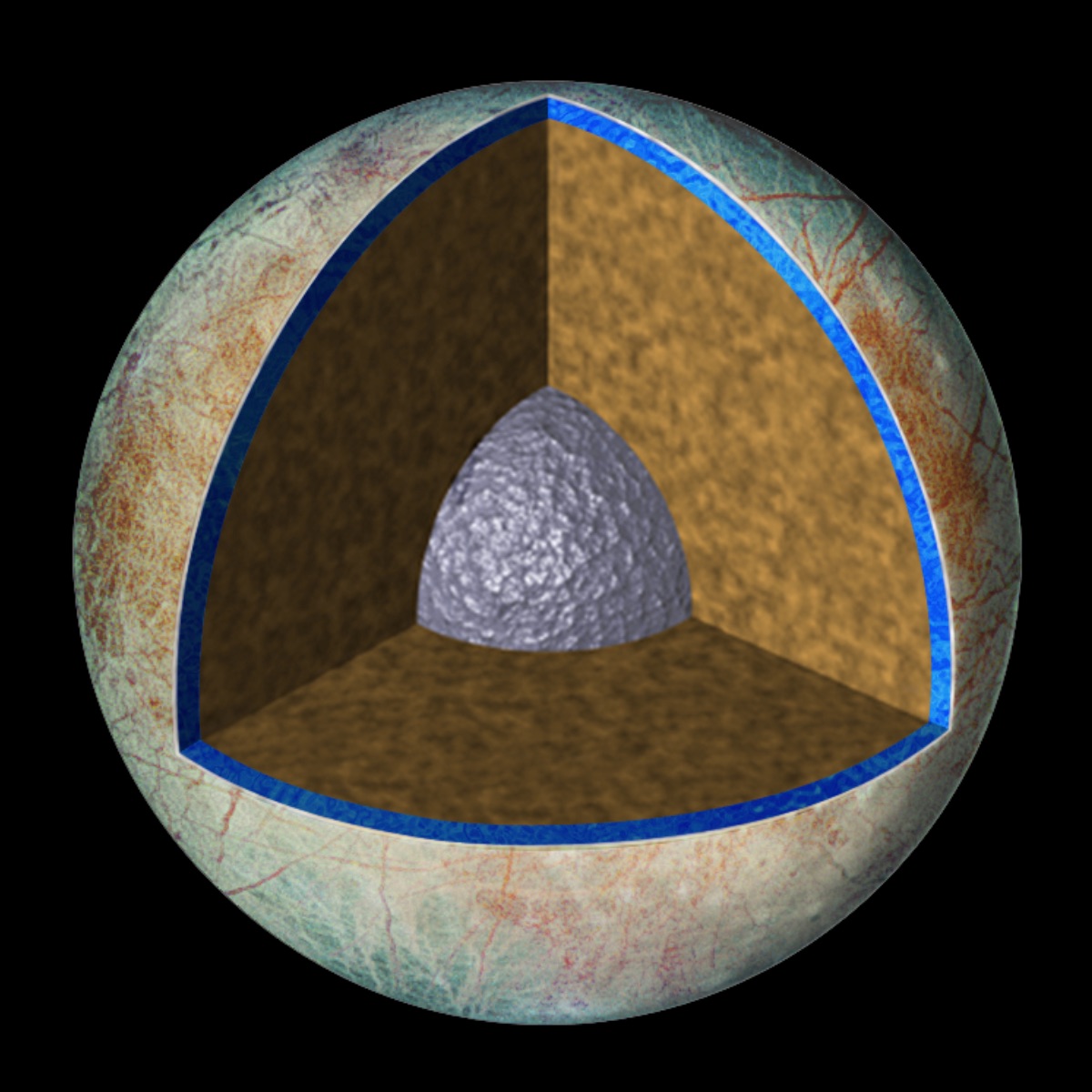
The solar system has always been a little like a sports team: everyone knows the starting lineup—the eight great plants and Pluto batting ninth. But it’s the minor leagues—the 183 moons—that hold the real surprises. Of that huge swarm, perhaps none is as intriguing as Jupiter’s Europa, a frozen world with an ocean of salty water buried beneath a rind of ice. If there’s extraterrestrial life in the solar system, Europa’s probably the best place to look.
Now, the promise of Europa has gotten greater still: According to new findings from the Hubble Space Telescope, active water geysers may be erupting from the frozen moon. Not only does that suggest that the ocean is there, but that it would be easier to study than NASA ever imagined.
“If vents open in the ice, then the water may radiate out and fall back on the surface,” said William Sparks, an astronomer with the Hubble Space Telescope Science Institute, at a press conference announcing the findings. “That makes it possible for a spacecraft to sample the water without ever having to drill through the ice.”
Europa, the sixth-largest moon in the solar system, owes its churning ocean to three of its sister moons: Io on the inside track and Ganymede and Callisto on the outside ones. Each time Europa passes or is passed by those moons, it is gravitationally flexed by them. That heats up its interior, melting most of the ice that covers the moon and resulting in a warm, liquid ocean that could be as much as 60 miles (100 km) deep, covered by an icy shell that could be as thin as 1.8 mi (3 km).
The Hubble images were captured in the ultraviolet wavelength during ten of Europa’s 3.5 day orbits of Jupiter in 2014. Europa is tidally locked to Jupiter, which means that, like our own moon, it always keeps one of its faces turned toward its parent planet and one turned out. When it transits—or passes in front of—Jupiter, any plumes will pop into sharp relief against the Jovian atmosphere, with the UV instruments revealing their temperature, chemical composition and more.
On three of the passes—in January, March and April of that year—what appeared to be multiple plumes were visible rising from Europa’s southwest limb. An additional plume, closer to the equator, was also spotted in the March images.
“We always see Jupiter from the same perspective which means if the plumes are real they must be intermittent,” said Sparks. “We are not aware of any instrumental artifacts that would account for these features.”
The new findings, if proven, do not make Europa the only geyser moon in the solar system. The Cassini probe orbiting Saturn has already found similar eruptions from the south pole of the moon Enceladus. But Enceladus is much smaller than Europa, with a diameter of just 310 mi. (498 km) compared to Europa’s 1,945 mi. (3,130 km), and its ostensible ocean may actually be a small southern sea. Europa’s ocean, by contrast, is globe-girdling and could thus produce plumes anywhere on the surface. What’s more, the Jovian system is simply easier for spacecraft to reach, located an average of 483 million mi. (777 million km) from Earth, compared to 874 million mi. (1.4 billion km) for the Saturnian system.
All these happy facts are converging at just the right time: NASA is already planning two unmanned missions to Europa—one launching in 2022 and one in 2024. The first of the two will orbit Europa looking for likely places for a lander to touch down; the second one will make the landing at the spot that’s chosen.
Current designs call for the lander to be equipped with a heated drill to bore through the ice and sample the water beneath, and the new findings don’t change that. The drilling process will be painstakingly slow, however, especially because the 1.8 mi. thickness of the surface ice is only a low end projection; it could turn out to be ten times as thick. The possibility of getting a preliminary look at the chemistry of the Europan water simply by landing on the surface or even flying through a plume makes the argument for the Europa missions all the more compelling.
“For a long time humanity has been wondering about whether there is life beyond Earth,” said Paul Hertz, director of the astrophysics division at NASA headquarters. “We’re lucky to live in an era in which it’s possible to learn the answer.” Today, that answer came just a little closer.
More Must-Reads From TIME
- The 100 Most Influential People of 2024
- The Revolution of Yulia Navalnaya
- 6 Compliments That Land Every Time
- What's the Deal With the Bitcoin Halving?
- If You're Dating Right Now , You're Brave: Column
- The AI That Could Heal a Divided Internet
- Fallout Is a Brilliant Model for the Future of Video Game Adaptations
- Want Weekly Recs on What to Watch, Read, and More? Sign Up for Worth Your Time
Write to Jeffrey Kluger at jeffrey.kluger@time.com